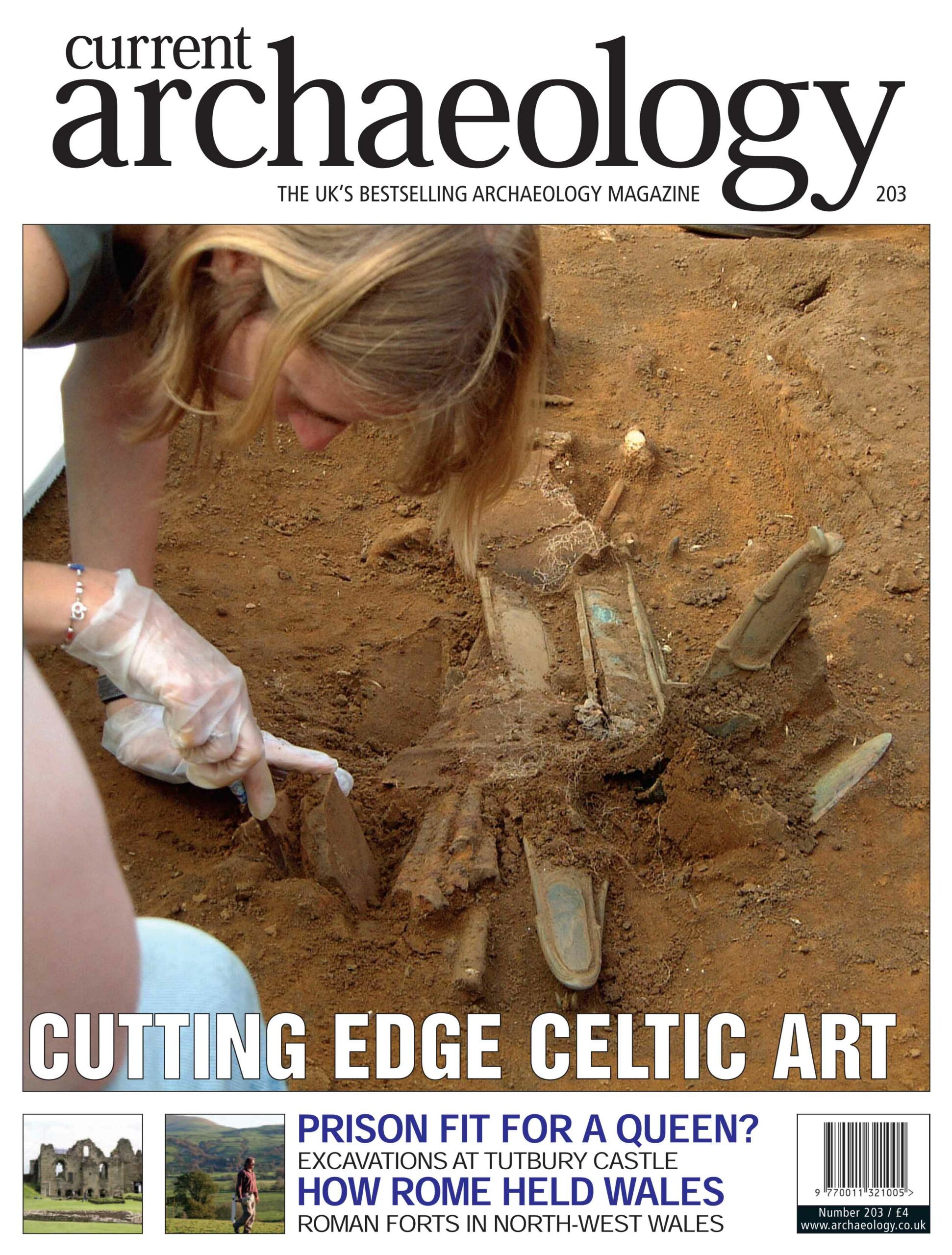The finest Celtic art for a generation has recently been unearthed at South Cave, in Yorkshire. A hoard of Iron Age swords in their finely decorated scabbards reveals the superb artistry of the Iron Age craftsmen. Most of such metalwork – and Britain is well endowed with it – has come from chance finds in rivers or as surface finds. But at South Cave, near Hull, metal-detectorists saw the ends of scabbards just clipped by ploughing, and they called in the Humber Archaeology field unit to excavate. David Evans gives us a firsthand account of his discoveries.
Big digs are still happening. We look at a huge excavation at Llandygai near Bangor in North Wales producing evidence of early Neolithic rectangular buildings – are they ceremonial or domestic? As is often the case, though, work on this scale reveals human activity from almost every period, from early Prehistoric times to modern – with a gap in the Middle Ages.
Traprain Law has been an iconic site in Scottish archaeology ever since the discovery there in 1919 of a great hoard of late Roman silverware, much of it cut up ready for re-cycling. The hillfort, near Edinburgh, was the tribal capital of the Votadini. New excavations emphasize, however, that Traprain’s story goes much further back in time. Bronze Age finds begin to look more like evidence for a sizeable hilltop settlement rather than casual activity, and there is even a possibility of Neolithic settlement as well. Could one call Traprain a Bronze Age town?
The Romans undertook some of their bloodiest fighting in North-West Wales, yet their forts have been little known. Now brilliant fieldwork by David Hopewell using geophysical methods has not only confirmed the existence of these forts, but has revealed in startling clarity the layouts of their interiors, and of the extensive complex of operations, military and civilian stretching for some distance in all directions around the forts.
On three separate occasions, Mary Queen of Scots was imprisoned in Tutbury Castle in Staffordshire. This had been one of the great Medieval strongholds which, like better-known Nottingham, guarded the Midlands and provided a gateway to the North. Now under proper excavation for the first time, the history of the castle, and perhaps even Mary’s dingy accommodation is being revealed.
News brings reports on the Roman soldiers executed at York, possible rock art from the chambered tomb at Barclodiad y Gawres on Anglesey, an important Iron Age warrior burial at Dunbar – together with a splendid Anglo-Saxon skillet or ‘saucepan’ from Shalfleet on the Isle of Wight. Then there is a marvellous example of Gothic art in an extremely rare ‘double leopard’ or double florin of Edward III – the very first gold issue of the later medieval period, and a disturbing account of the sale of the Anglo-Saxon Coenwulf coin.
This issue also sees the publication of our annual Archaeology Handbook. This supplies all the indispensable information for archaeologists, ranging from lists of all the archaeological societies, to details of where you can find a dig to experience archaeology for yourself. And there is also our guide to everything you wanted to know about archaeology in Britain but were afraid to ask – ranging from an explanation of PPG 16 – to that perpetual question how can I get a job in archaeology?
This is issued free to all subscribers, so have a good read now, and then keep it as a work of reference for the rest of the year.

